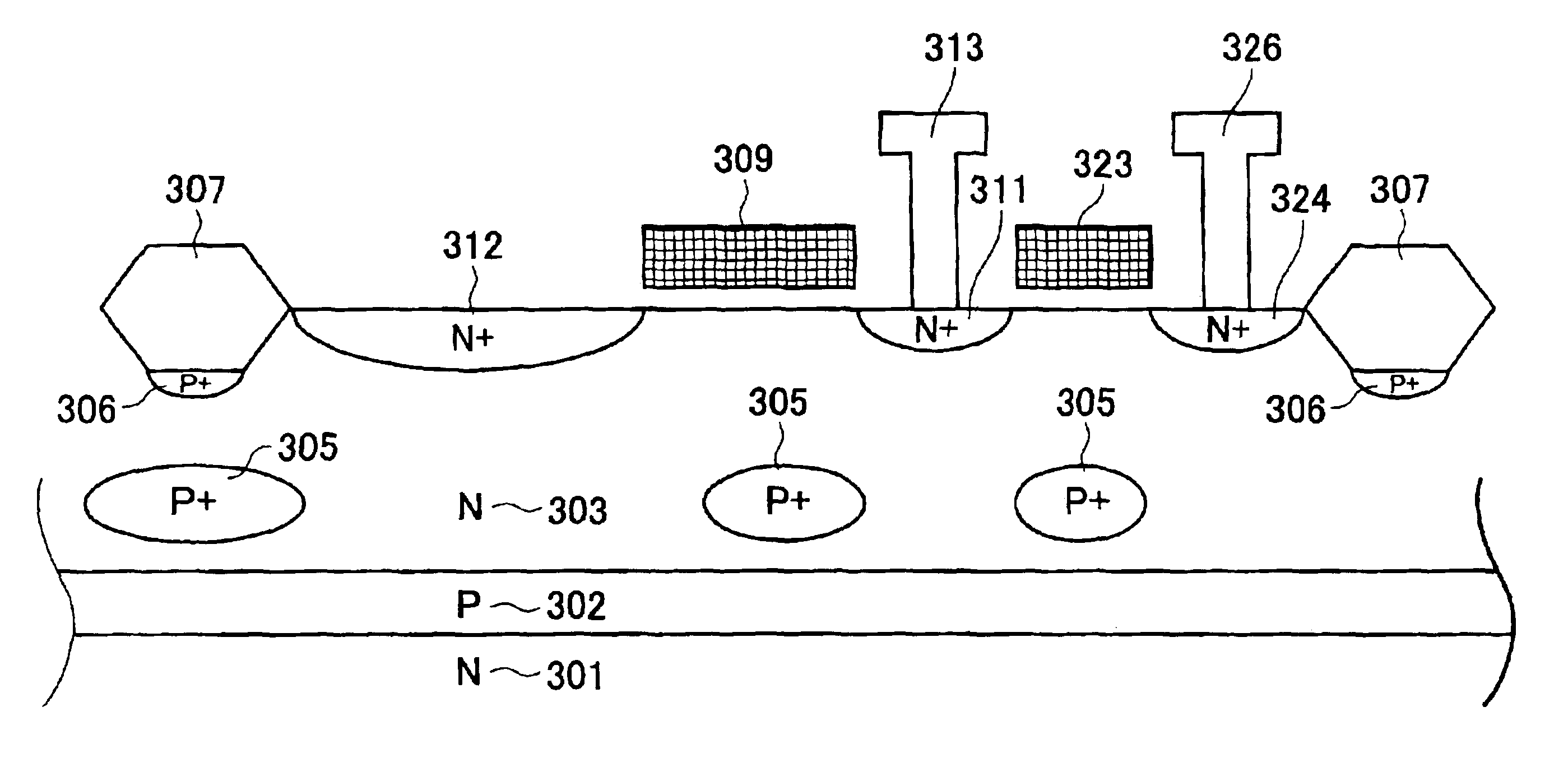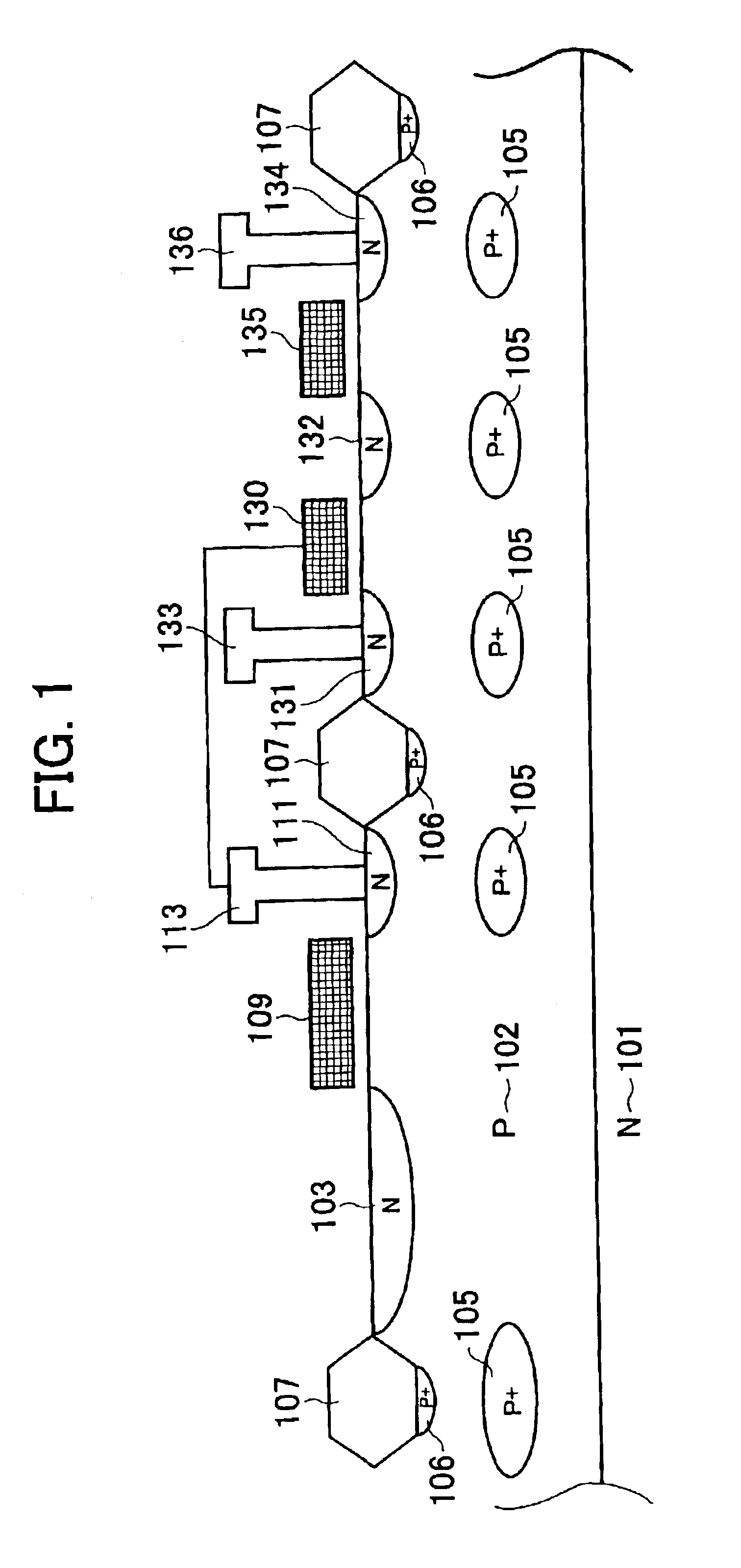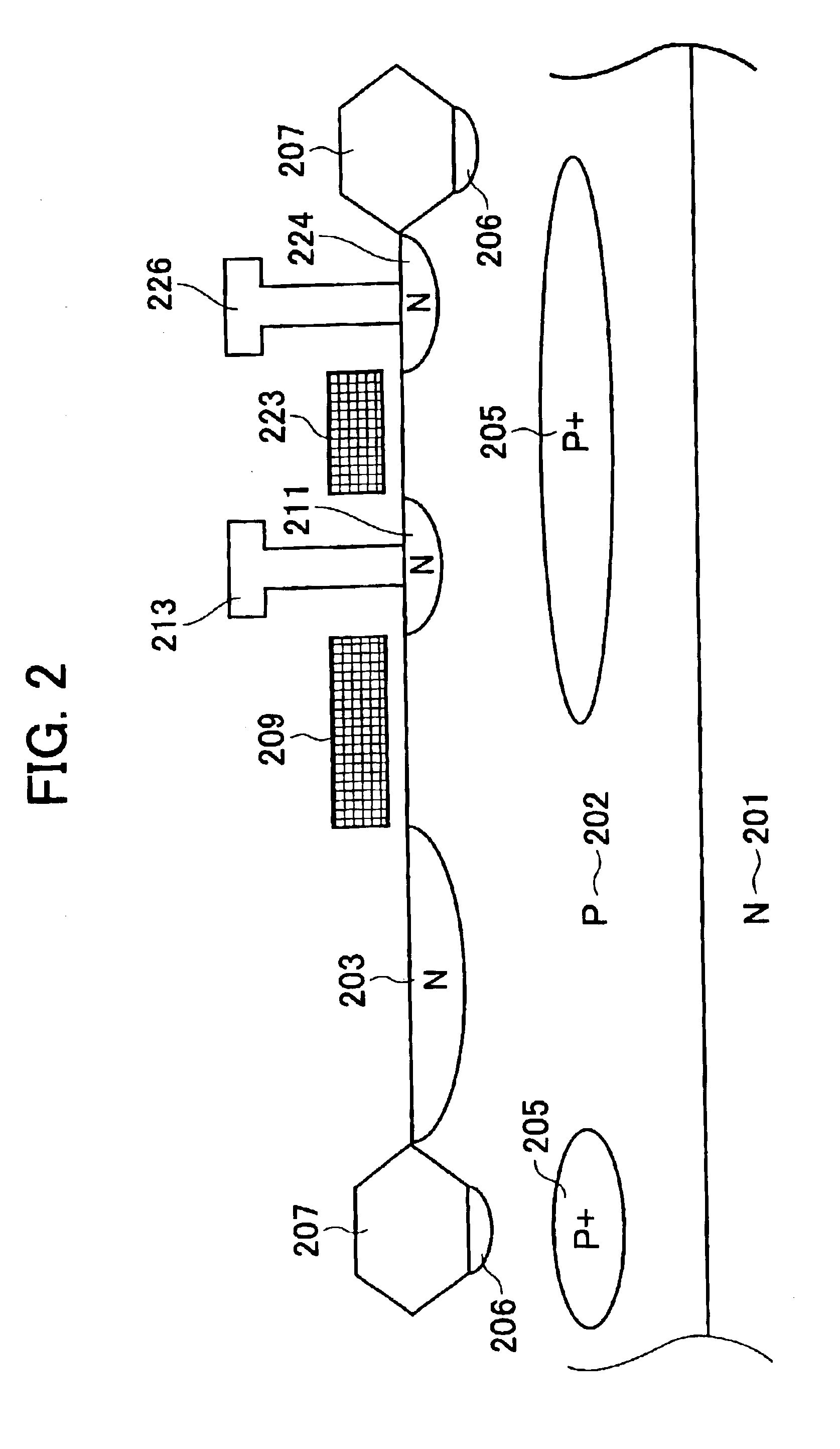Solid-state image sensing device having pixels with barrier layer underneath transistor regions and camera using said device
a solid-state image and sensor technology, applied in the field of solid-state image sensing devices and camera systems, can solve the problems of difficult integration of peripheral circuits such as drive circuits, high power consumption and drive voltage, and high cost, and achieve high spectral sensitivity, less charge leakage, and high reproducibility.
- Summary
- Abstract
- Description
- Claims
- Application Information
AI Technical Summary
Benefits of technology
Problems solved by technology
Method used
Image
Examples
first embodiment
[0053]FIG. 1 is a schematic sectional view of a solid-state image sensing device according to a first embodiment of the present invention.
[0054]In FIG. 1, reference numeral 101 represents a semiconductor substrate having a first-conductivity-type (n-type in this case by way of example), 102 is a p well which is a second-conductivity-type semiconductor region, and 103 is an n-type semiconductor region which is formed in the p well 102 and which is a first-conductivity-type semiconductor region. The p well 102 and the n-type semiconductor region 103 constitute a photodiode. Signal charge that is generated from incident light is stored in the n-type semiconductor region 103. Reference numeral 111 represents a drain region of a transfer transistor, which is a first transistor, for transferring signal charge generated by the photodiode. The drain region has the first conductivity type and serves as an FD region and an n-type semiconductor region formed in the p well 102. Reference numera...
second embodiment
[0064]FIG. 2 is a schematic sectional view of a solid-state image sensing device according to a second embodiment of the present invention.
[0065]More specifically, FIG. 2 is a schematic sectional view of a solid-state image sensing device having a photodiode, a transfer transistor and a reset transistor for resetting an FD electrode 211. Thus, this solid-state image sensing device has a reset transistor, serving as a second transistor, for resetting the FD electrode 211.
[0066]In FIG. 2, reference numeral 223 represents a gate electrode of the reset transistor for resetting the FD electrode 211 and reference numeral 224 represents a drain region of the reset transistor and is connected to a power-supply line 226.
[0067]This embodiment is different from the first embodiment described above in that a potential barrier 205 is also provided under the gate electrode 223 of the second transistor. Thus, the potential barrier 205 reduces the amount of signal charge that is absorbed by n-type ...
third embodiment
[0075]FIG. 3 is a schematic sectional view of a solid-state image sensing device according to a third embodiment of the present invention.
[0076]Specifically, FIG. 3 is a schematic sectional view of a solid-state image sensing device having a photodiode, a transfer transistor, and a reset transistor for resetting an FD electrode 311.
[0077]Referring to FIG. 3, an n well or n-type semiconductor region 303 is provided as a first-conductivity-type semiconductor region at a layer above an n-type semiconductor substrate 301. A p-type semiconductor region 302 is provided as a second-conductivity-type semiconductor region. The p-type semiconductor region 302 and the n-type semiconductor region 303 constitute a photodiode. A first-conductivity-type signal-charge storing region 312 collects and stores signal charge generated by the photodiode and has a doping concentration higher than the n-type semiconductor region 303.
[0078]The difference between the configurations shown in FIGS. 2 and 3 is ...
PUM
 Login to View More
Login to View More Abstract
Description
Claims
Application Information
 Login to View More
Login to View More - R&D
- Intellectual Property
- Life Sciences
- Materials
- Tech Scout
- Unparalleled Data Quality
- Higher Quality Content
- 60% Fewer Hallucinations
Browse by: Latest US Patents, China's latest patents, Technical Efficacy Thesaurus, Application Domain, Technology Topic, Popular Technical Reports.
© 2025 PatSnap. All rights reserved.Legal|Privacy policy|Modern Slavery Act Transparency Statement|Sitemap|About US| Contact US: help@patsnap.com



